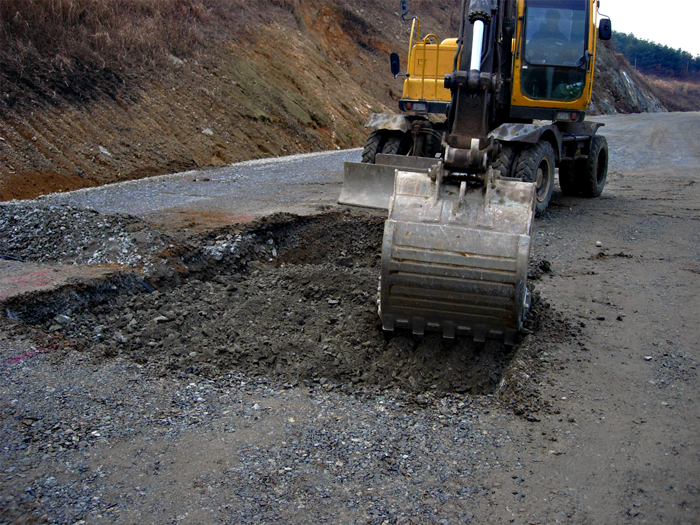



韓国高速道路公社 (KEC) は、韓国全土の高速道路の建設と管理を目的として 1969 年に設立されました。KEC の目標は、高速道路の長さを延ばして、全国のすべての住民が 30 分以内に高速道路に到達できるようにすることです。この目標の達成は、新しい道路を建設するコストと既存の道路の路面を維持するコストという 2 つの重要な財務上の考慮事項によって左右されます。
KEC は高速道路の管理・維持管理の一環として、損傷した路面の補修・再舗装を行っています。補修・再舗装にかかるコストを削減するため、KEC は事後管理から予防管理への転換を含む体系的な維持管理戦略を策定しました。
KEC は、予防保全管理の一環として、冬季の舗装道路の凍結防止に注力してきました。凍結による路面の水分や、寒い冬季から暖かい春季への気温の差は、道路にとって特に有害です。これらの季節的要因により、路面の補修や再舗装にかかるコストが大幅に増加する可能性があります。
高速道路の凍結を防ぎ、路面への冬の影響を最小限に抑える方法を見つけるために、KEC は国土海洋部 (MLTM)、仁川国立大学、韓国建設技術研究院 (KICT) と協力しました。これらの共同の努力と支援により、KICT は道路の下に埋め込むことができる凍結防止層を開発しました。
次のステップは、韓国全土の舗装道路で凍結防止層をテストすることでした。45 か所のテスト サイトが選定され、現場測定システムが提供されました。B&P International は、すべてのテスト サイトに Campbell Scientific の測定機器を提供しました。多数の機器には、45 台の CR1000 データロガー、45 台の AM16/32B リレー マルチプレクサ、および 615 台の CS616 水分含有量反射計が含まれていました。各ステーションには、後に熱電対、線形可変差動変圧器 (LVDT)、およびロード セルが追加されました。
各試験サイトでは、B&P が凍結防止層を敷き、データ ロガーとセンサーを取り付けました。その後、その層はアスファルトで舗装されました。3 年間、試験サイトのセンサーは、Campbell Scientific の LoggerNet と RTMC (リアルタイム監視および制御) ソフトウェアを実行する中央 PC に接続された CR1000 を使用して監視されました。Campbell 監視システムにより、KEC は 2 つの目的を達成できました。45 の試験サイトを継続的に監視することと、KEC の高速道路の冬季の損傷を防ぐ凍結防止層の有効性を長期にわたって評価することです。